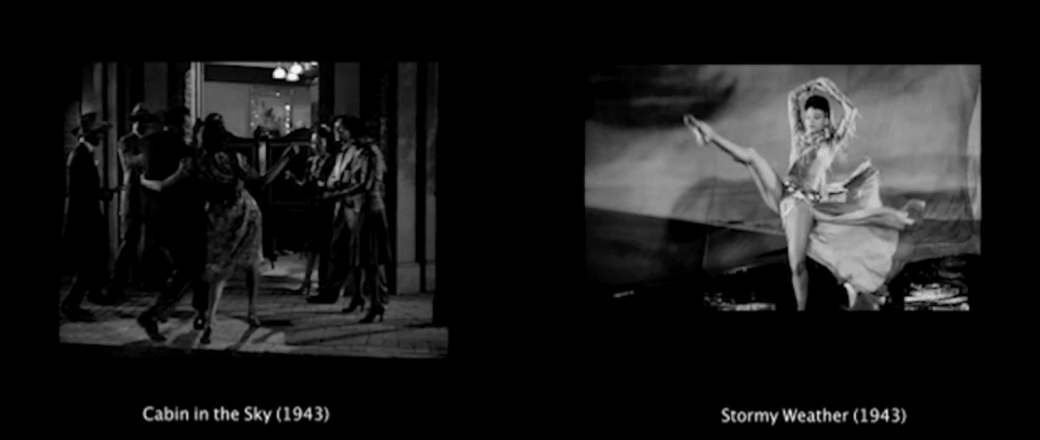Screen-Stage Dialogues
Pedagogies for Witnessing and Black Performance
During World War II, and despite Jim Crow, the U.S. witnessed an explosion of interest in Black dance and expressive culture. Black American, African, and Afro Caribbean dancers and choreographers engaged in anthropological research in the South of the U.S., the Caribbean, and Africa to explore music and dance of the Black diaspora, putting them in dialogue with Western dance forms—such as Zora Neale Hurston, Katherine Dunham, Pearl Primus, and Asadata Dafora, among others. During this period, renowned dancer and choreographer Katherine Dunham choreographed and toured L’Ag’Ya, a dance performance based on the expressive culture of Martinique. The only moving archival record that remains is a short clip titled Ballet Creole produced by British Pathé in 1952. Almost a decade earlier, in 1943, Trinidadian-born and New-York-raised choreographer, dancer, activist, and scholar Pearl Primus created one of her most commemorated and commended ‹protest› dances, the solo Strange Fruit—a response to the continuous violence against Black people in the U.S. In the same year, two musicals with an all-Black cast were released: director Vicente Minelli’s musical debut Cabin in the Sky and Stormy Weather, loosely based on the life of dancer ‹Bill Bojangles› Robinson. Both musicals were choreographed by Dunham.
This video essay is an exercise in transformative and performative videographic/audiovisual methodology.1 As transformative criticism, it articulates rhythm, repetition, and connections across the films. As performative criticism, it creates new choreographies out of continuities and discontinuities in image and sound. In the context of these particular films, the video essay becomes a methodological tool that seeks to explore the political possibilities of reading these films and choreographies together.
The video essay creates a dialogue between choreography, music, and imagery to demonstrate that these films suggest different pedagogies of witnessing—characters witness, look, watch, experience. These pedagogies of looking as witnessing offer forms of engaging the Black performances featured in these films in a way that tends to «the reproduction of the injury [of slavery and the Black Atlantic trade] or the ethics of witnessing and the limits of empathy.»2 Putting the films in dialogue expands this pedagogy, encouraging readings of the films against their historical context while exploring what they might mean today. Thus, the video essay invites spectators to start looking at these films so that, in watching, they also participate in aesthetic and performative forms of resistance against the pervasive conditions of antiblackness.3The poetic and transformative possibilities of videographic methodology provide new ways to engage these films by estranging traditional notions of dance, the body, and connectivity to extend a wider network of solidarity and intercultural resonance that shows the potential of dance as a tool to witness and create dialogue about and against anti-Black violence.
- 1Cf. Jason Mittell: Videographic Criticism as a Digital Humanities Method, in: Matthew K. Gold and Lauren F. Klein (eds.), Debates in the Digital Humanities, Minneapolis 2019, 224–42.
- 2Saidiya V. Hartman: Scenes of Subjection: Terror, Slavery, and Self-Making in Nineteenth-Century America, New York: W.W. Norton. & Company, 2022 [1997], 373.
- 3Christina E. Sharpe Sharpe: In the Wake: On Blackness and Being, Durham, NC: Duke University Press 2016.
Bevorzugte Zitationsweise
Die Open-Access-Veröffentlichung erfolgt unter der Creative Commons-Lizenz CC BY-SA 4.0 DE.
